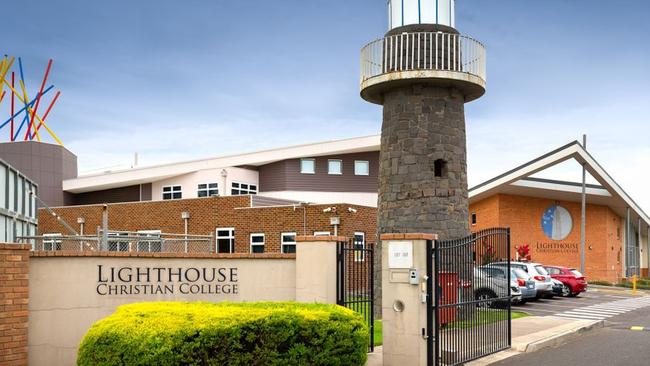Private schools with most bang for your buck
Schools with fees of up to $33,000 a year are leading NAPLAN results – but several low-free private options are also on top in the rankings.

Education
Don't miss out on the headlines from Education. Followed categories will be added to My News.
Lighthouse Christian College in Cranbourne is the best-value top-performing school in Victoria, soaring past many high-fee schools in academic results.
Despite 93 per cent of its student body coming from non-English speaking backgrounds, the school is ranked 12th in the state based on year 9 average NAPLAN scores.
This is despite the fact that it charges average fees of just $2173 a year.
This puts them well ahead of many other schools costing more than $35,000 in year 12 such as Mentone Grammar, ranked 220, Xavier College, ranked 234 and St Michael’s Grammar, ranked 292.
Other superstar low-cost schools with top results include Sirius College which is ranked 115th in the state with an average fee of $3226 per year and Red Rock Christian College which is ranked 55 with average fees of $3788.
Another low-cost excellent performer is Ballarat Christian College which has fees of less than $4000, but is ranked 107 statewide.
Mount St Joseph Girls’ College in Altona is ranked 134 but has fees of less than $5000.
Another school offering excellent value is Ballarat Clarendon College, which is ranked 7th across the state but which has average fees of less than $14,000.
Northside Christian College is another great value choice, ranked 81, but charging average fees of less than $6000.
Principal Michael Bond said the school was dedicated to developing a culture where students are passionate about learning.
“The College’s NAPLAN results in 2022 are a positive outcome and highlights our high-quality, rigorous learning program to support the learning of all students,” Mr Bond said.
“At Northside Christian College, we support students to flourish in their wellbeing, identity, purpose, and belonging, which we believe provides a strong foundation for students to achieve academic success,” he said.

Another great performer is Al-Taqwa College in Hoppers Crossing, which is celebrating, not just being ranked 161 in the state, but having three cricketers selected for Victorian state teams.
The boys include Muhammad Abdulrafay and brothers Aiman and Aayan Nadeem.
Principal Omar Hallak said the school was very proud of its academic results and sporting achievements.
“Their success, like the outstanding VCE results achieved by our Year 12s last year, inspire our students and staff, especially after everything our college endured in the Covid years,” he said.
Christian Schools Australia director of public policy Mark Spencer said Christian schools continue to “get the basics right”.
“Christian schools seek to provide a broad education focusing on the ‘whole student’, however the basic elements of numeracy and literacy measured by NAPLAN are an important foundational element,” Mr Spencer said.
“We are pleased with many of the 2022 NAPLAN results for Christian schools, both high performing and those with significant improvement, it reflects that many schools are getting these basics right.”

Australian Catholic University Institute for Learning Sciences and Teacher Education senior research fellow Dr Steven Lewis said NAPLAN was one piece of information parents can use to choose schools.
“NAPLAN is just one piece of information about school,” Dr Lewis said.
“It’s not to say that numeracy and literacy performance aren’t important, but it doesn’t tell you about the culture or values of the school, extra-curricular activities that are offered, or about the support it provides for students with diverse learning needs.”
Dr Lewis said the best thing for parents to do is visit schools, meet teachers and talk with other parents and students.
He said spending more on school fees shouldn’t be conflated with quality schooling.
“You can spend a lot of money on schooling and that school might perform well, but is it because the school is doing a really good job?,” he said.
“Or is it because the students who attend that school are coming from populations that have a higher socio-economic status and have more advantages that have nothing to do with the school themselves.”




